
Another thing I learned from Christopher Murtha’s thesis on Sturtevant’s engagement with photography and installation in the making of her Duchamps works is about the doors.
Specifically, I never really noticed or heard that much about the revolving doors Marcel Duchamp used as exhibition devices in the 1938 Exposition internationale du surréalisme he designed/curated at the Beaux-Arts in Paris. As Murtha pointed out, Duchamp later considered other elements from the show to be artworks—1200 Coal Bags Suspended From The Ceiling Over a Stove, for example—but the doors didn’t get the same treatment. Despite, as I see below, Duchamp’s well-documented interest in doors—and Large Glass works that, you must admit, look rather doorish.
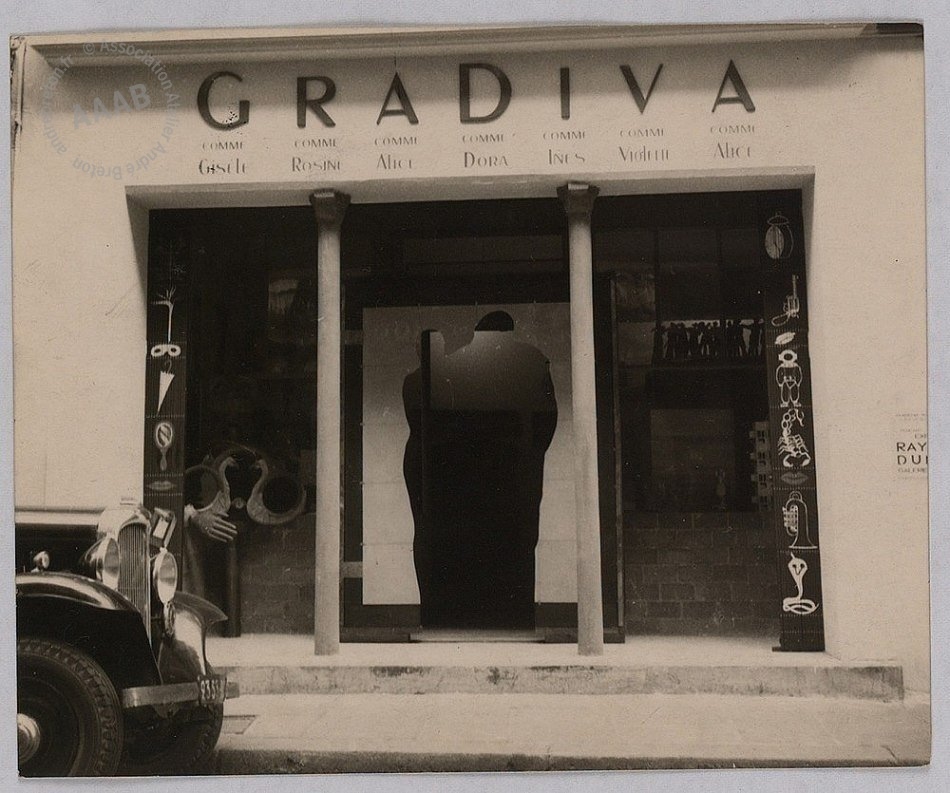
Why, just the year before, André Breton asked Duchamp to create the doors for the Surrealist hotspot, la galerie Gradiva, he tried to run in Paris. For Freud—and thus for the Surrealists—Gradiva was to feet what Oedipus was to moms. Duchamp’s doorway was the silhouettes of a couple—probably husky Breton and his svelter wife Jacqueline—cut out out of a large pane of frosted glass.
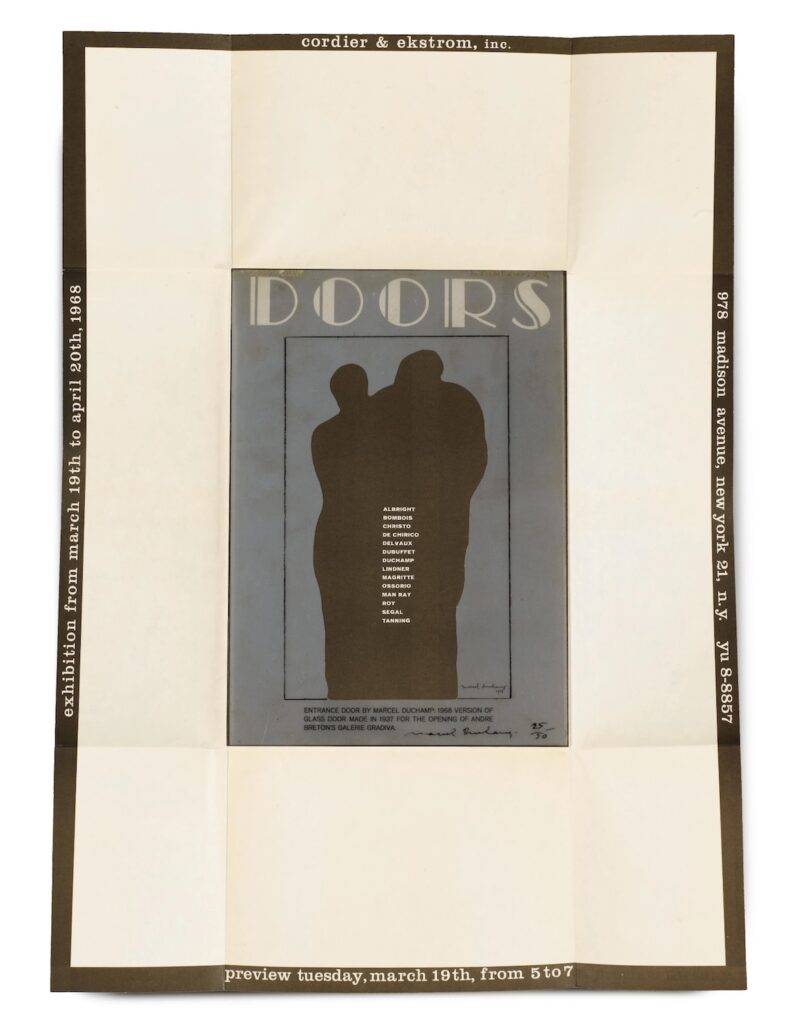
Duchamp asked for the original to be destroyed when the galerie failed, just around the time Breton asked him to design the Beaux-Arts show. In 1968, when Cordier & Eckstrom staged a Doors exhibition, Duchamp used an archival photo to have the Porte Gradiva remade in Plexiglass.

Here it is just leaning against the wall at MoMA’s iteration of the 1973-74 retrospective organized by Anne d’Harnoncourt & Kynaston McShine. That show was packed. The full-scale photo of Duchamp’s two-way door from his 1920s studio on rue Larrey was loaned from Galerie Schwarz. The door itself, a rare, surviving original Readymade—though Duchamp had it made for him—was in a private collection.
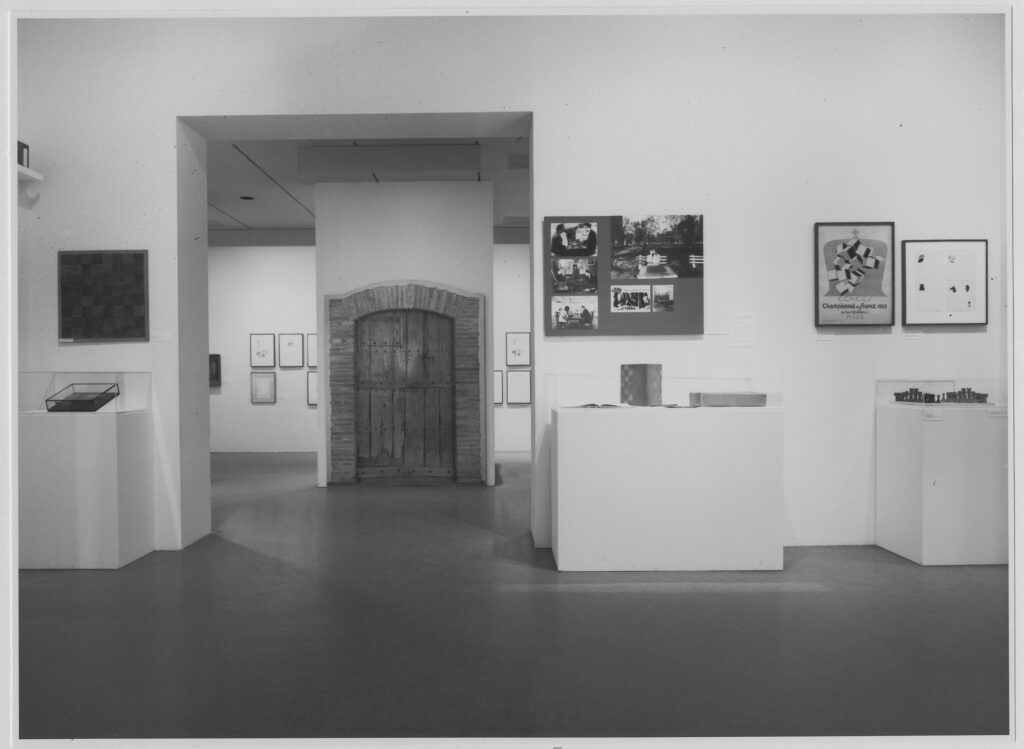
But wait, what else was in this retrospective? Absolutely everything. Even the things that couldn’t be. I went to Kynaston’s Museum as Muse show multiple times; it rocked my world. Yet how did I never hear that MoMA made a full-scale photo version—shaped!—of Étant donnés mounted on a floating wall. Did it have a View-Master embedded in it, with a slide of the inside? I would love to know Madame Duchamp’s take on this.
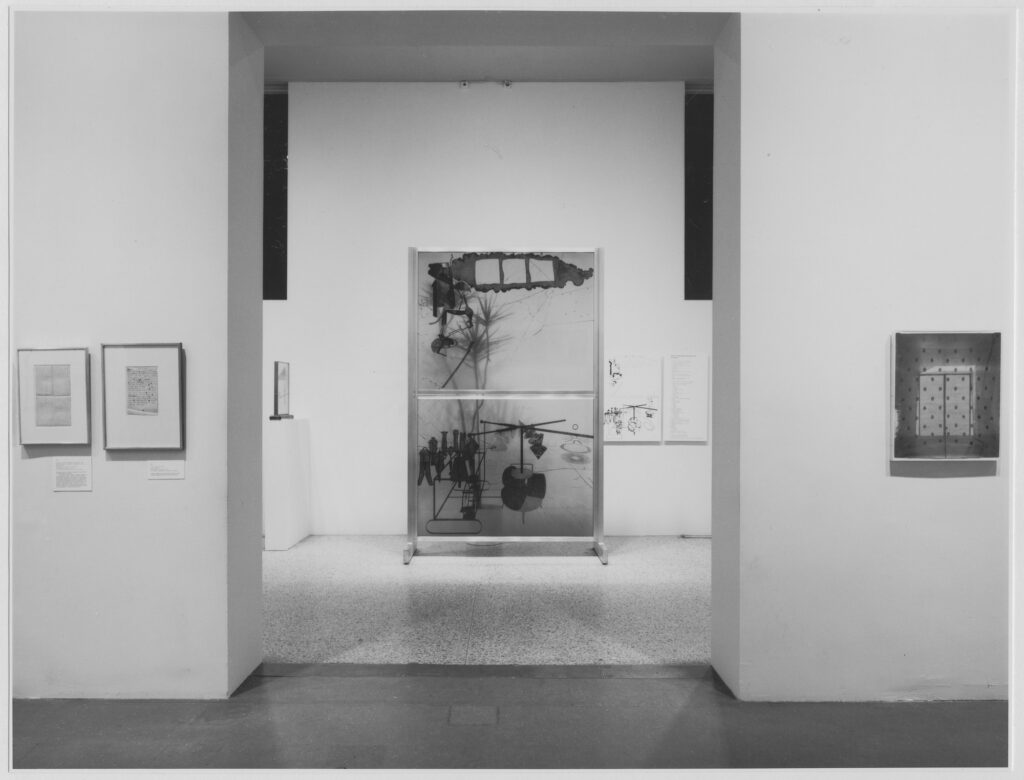
And on this. Because holy smokes, they made their own The Large Glass. In 1973, in addition to the original, which does not leave Philadelphia, there were two artist-certified, full-scale replicas of The Large Glass: one at the Modernamuseet, made in 1961 by Ulf Linde; and one at Tate, made in 1965-66 by Richard Hamilton. But those (and subsequent) replicas all seek to replicate The Large Glass‘s long lost, unbroken state; this MoMA facsimile captures the cracks-and-all reality of Philadelphia.
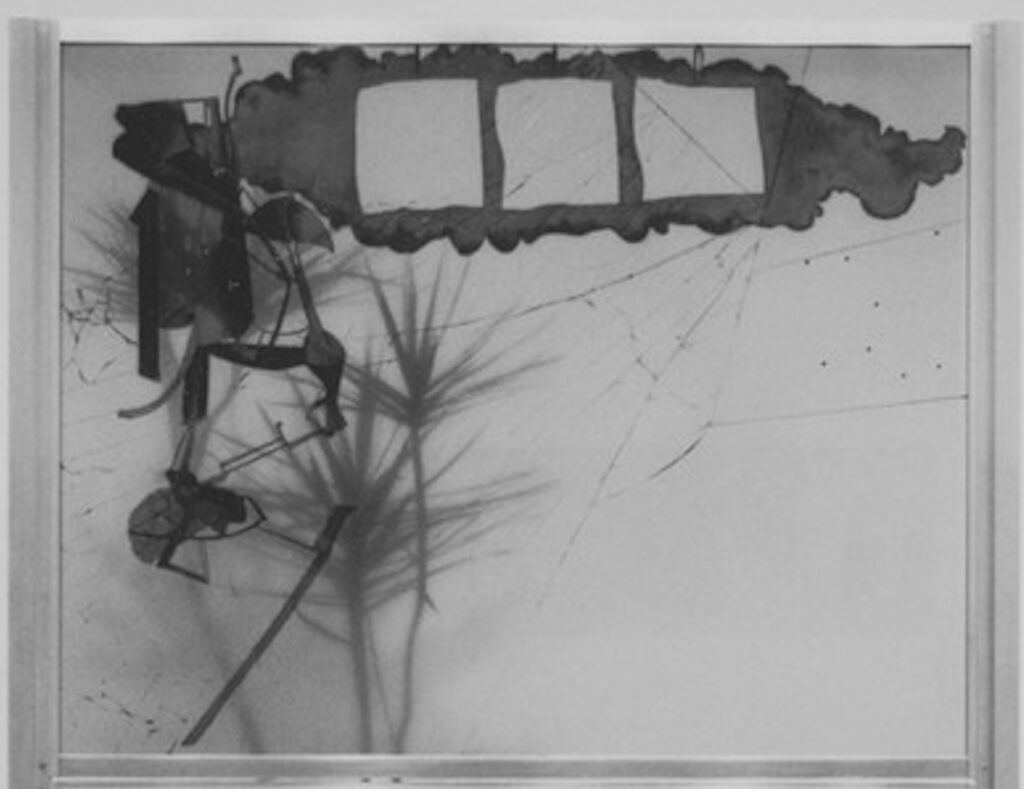
And just to prove you can see through it, MoMA put a plant behind it. I am in awe. The checklist, which is part of the now-canonical exhibition catalogue, makes no mention of these replicas. What are they? Is this perhaps the full-scale transparency the BBC made as a backdrop for their 1961 interview with Duchamp, which they later gave to Hamilton? No. MoMA archivists kindly pointed me toward a folder of correspondence pertaining to this reproduction. And now I want to know Madame Duchamp’s view of THIS, too.
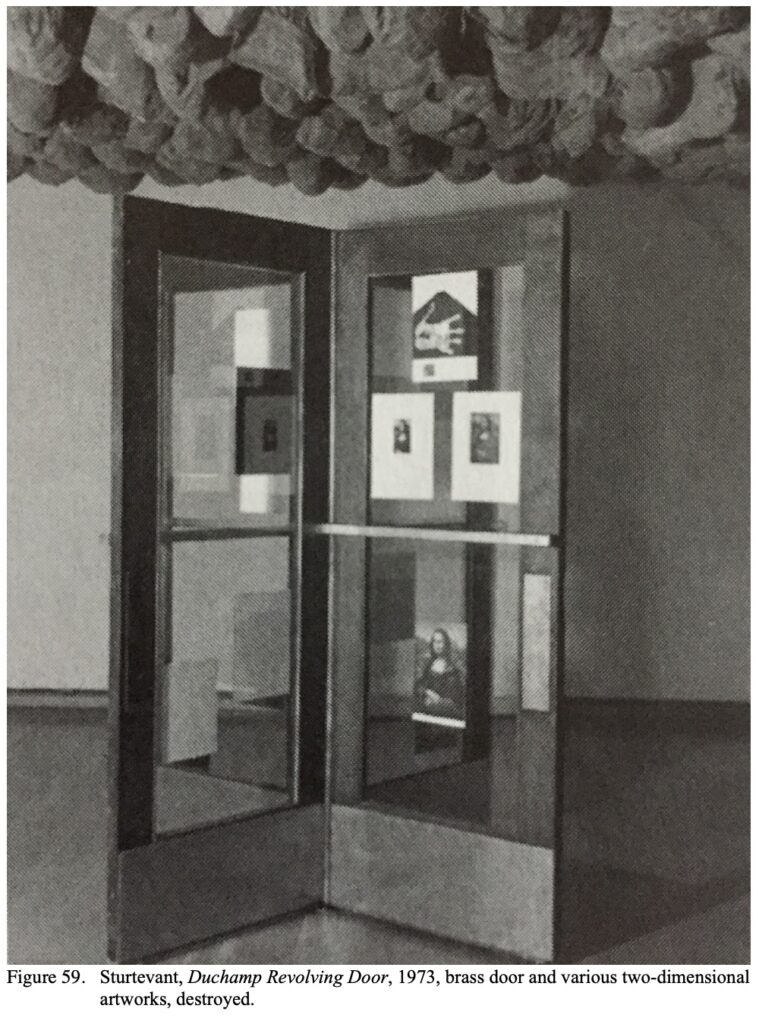
But back to the Duchamp’s revolving doors. Duchamp may not have considered them a work, but at least one time, Sturtevant did. Christopher Murtha’s thesis includes probably the most extensive scholarly discussion to date of Duchamp Revolving Door, a work Sturtevant installed in the Duchamp gallery of her 1973 show at the Everson Museum. It was covered with as many as 17 other Duchamp-related works, though only a few LHOOQs are visible, above. She repeated her Duchamp 1200 Coal Bags multiple times, Murtha notes, but Sturtevant never showed Duchamp Revolving Door again. It was listed in her 2005 MMK catalogue/catalogue raisonné as “Destroyed.” Which, I don’t feel like that should stop us.
Previously, very much related:
2016: On Richard Hamilton’s Large Glass: ‘History and materials change theoretically as well as physically’
2019: Marcel Duchamp’s Slightly Smaller Banner
2023: Alreadymade: A Thesis on Sturtevant’s Duchamps
Sturtevant’s Extrapolated Boîte-en-valise
